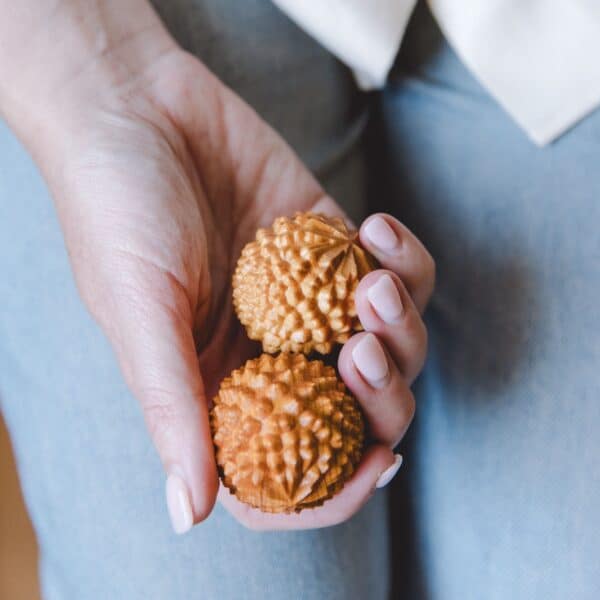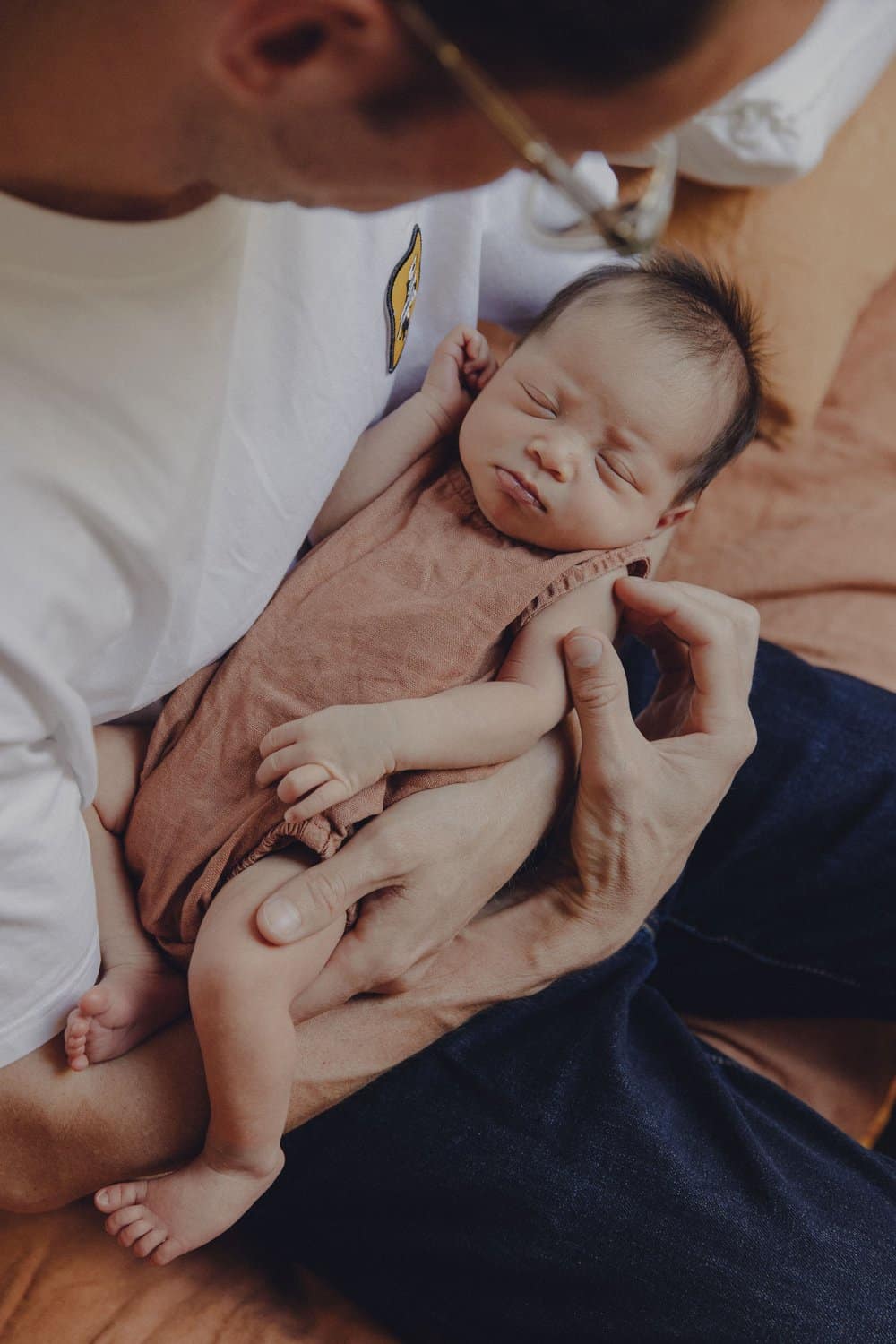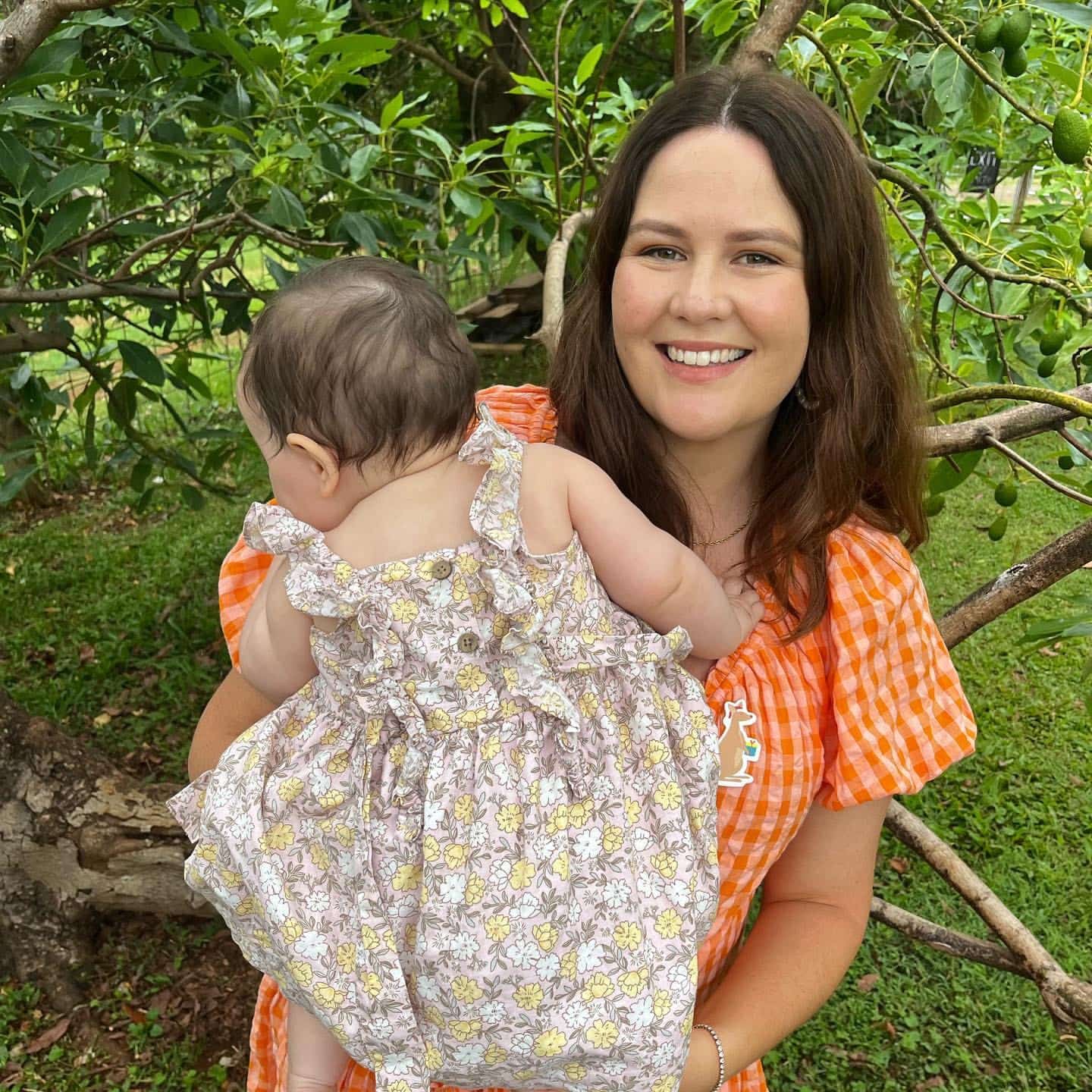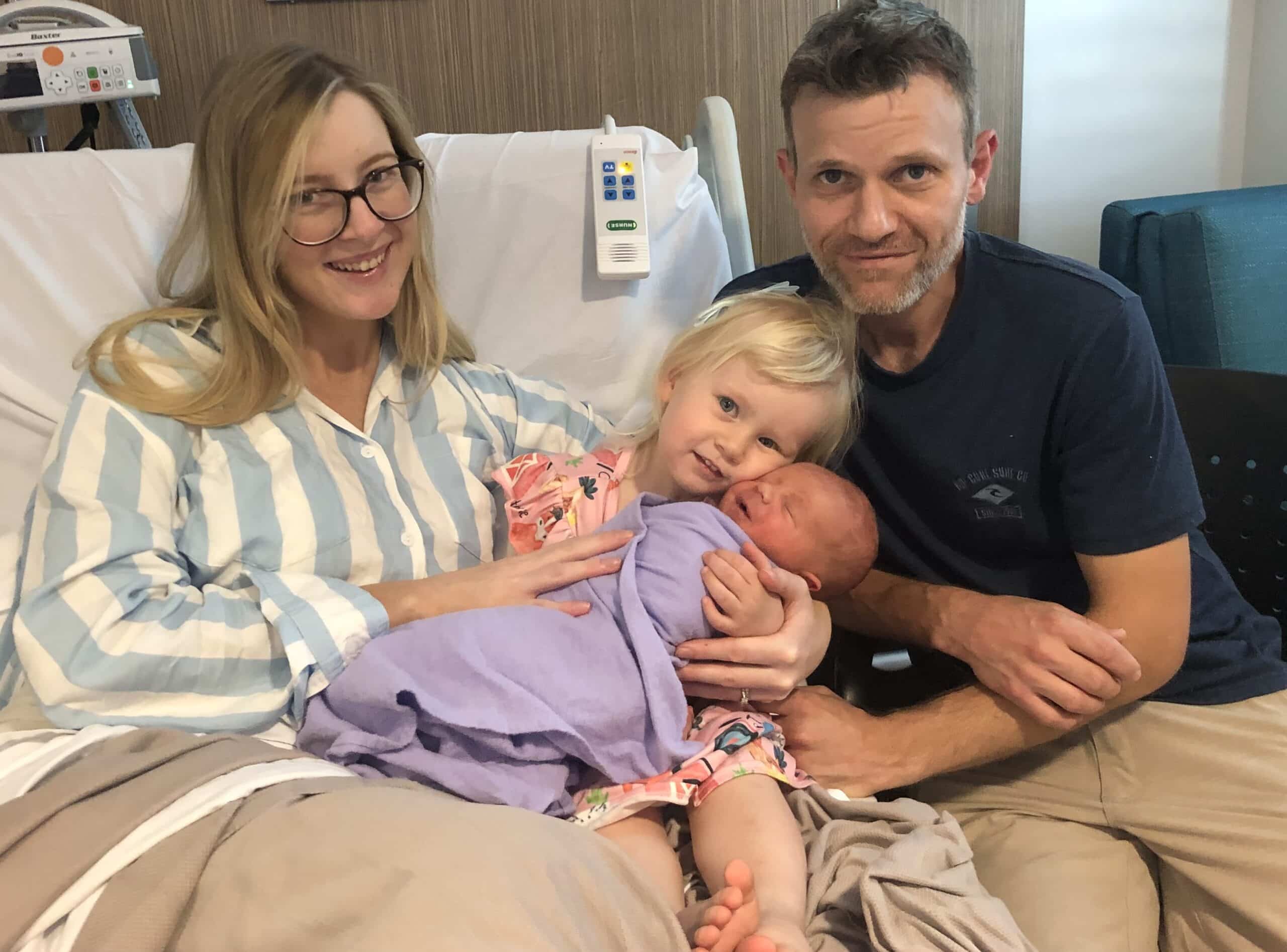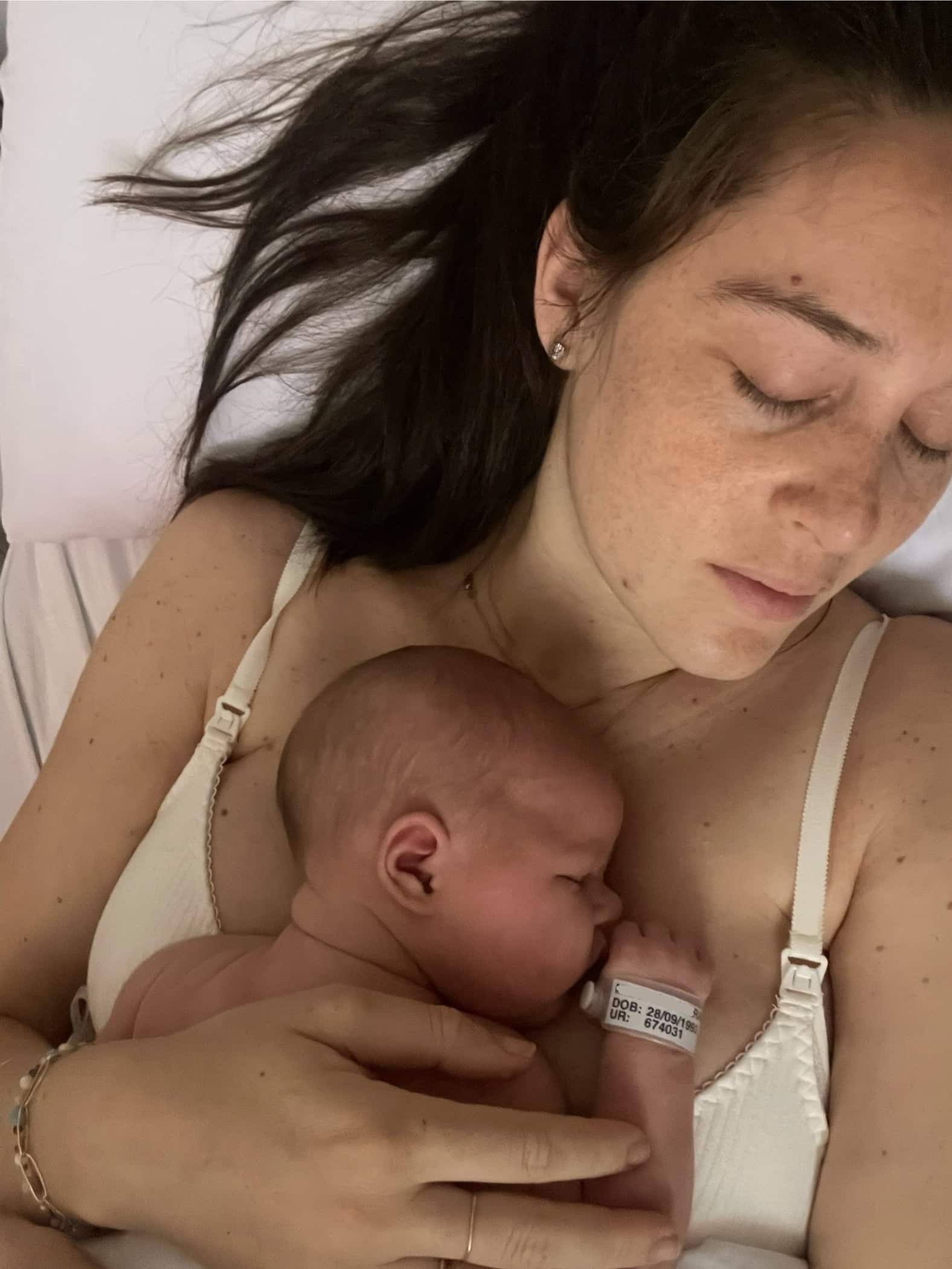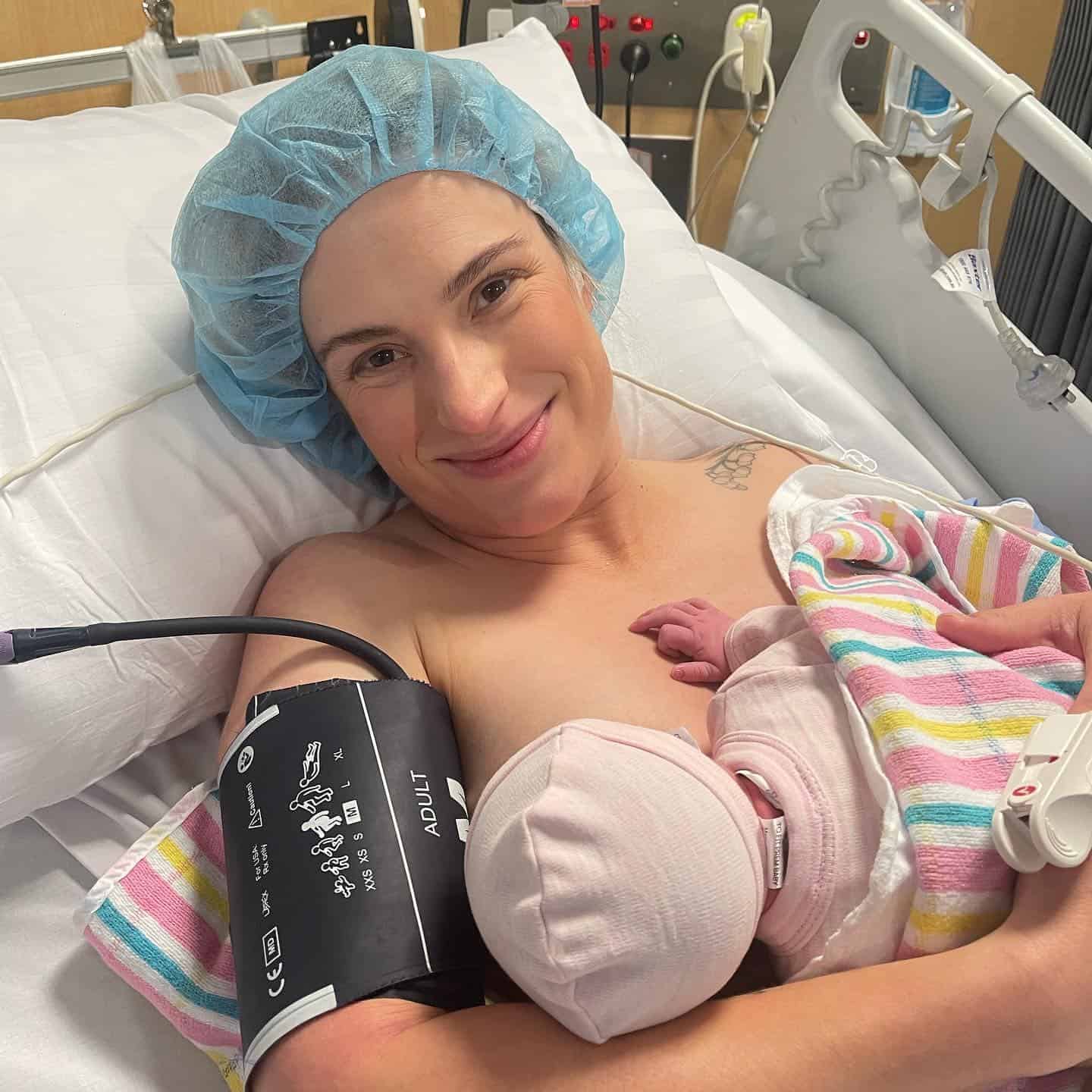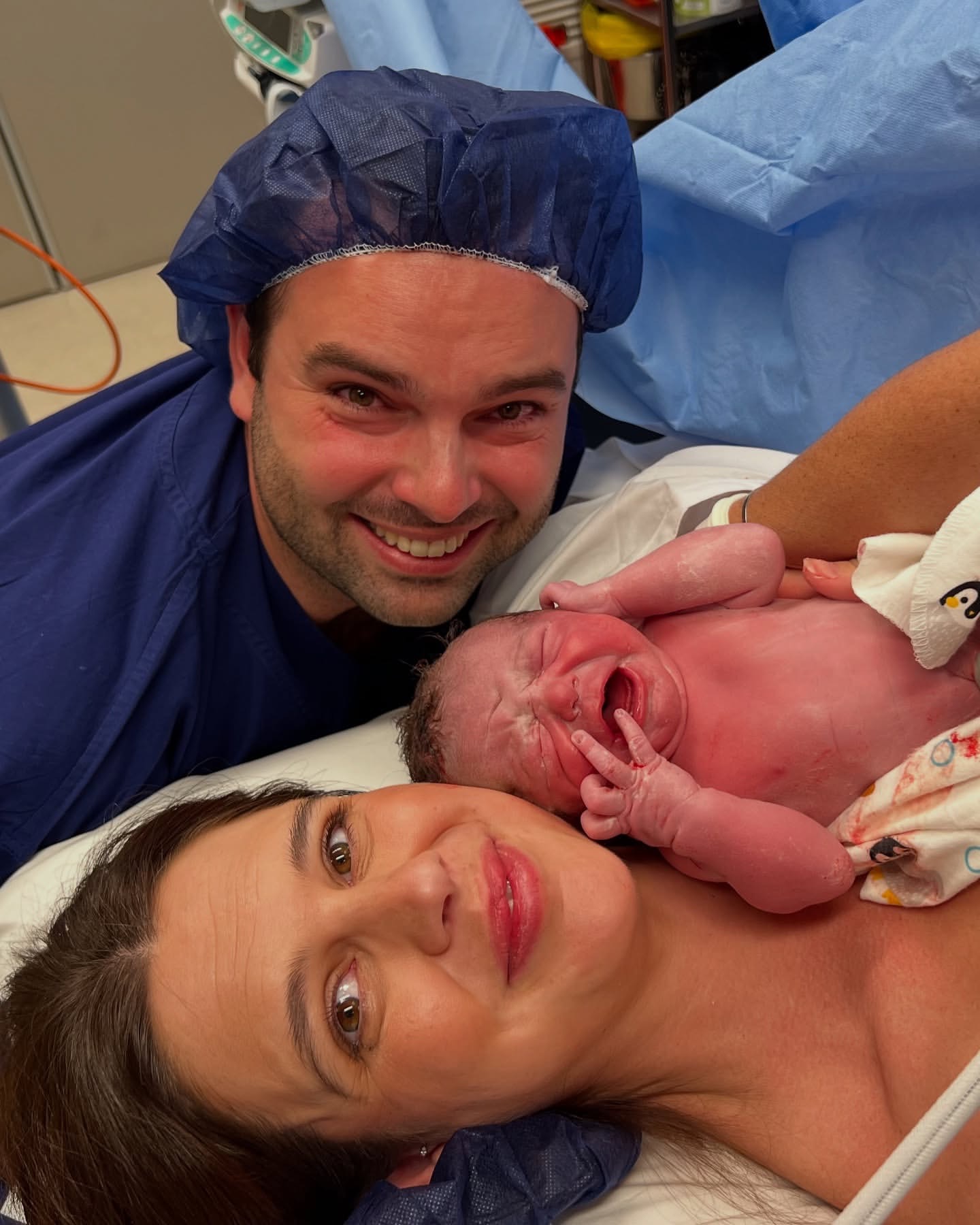Podcasts Sleep Safety Special with Loren Rushton – Sponsored by Bonds
EPISODE -2
Sleep Safety Special with Loren Rushton – Sponsored by Bonds
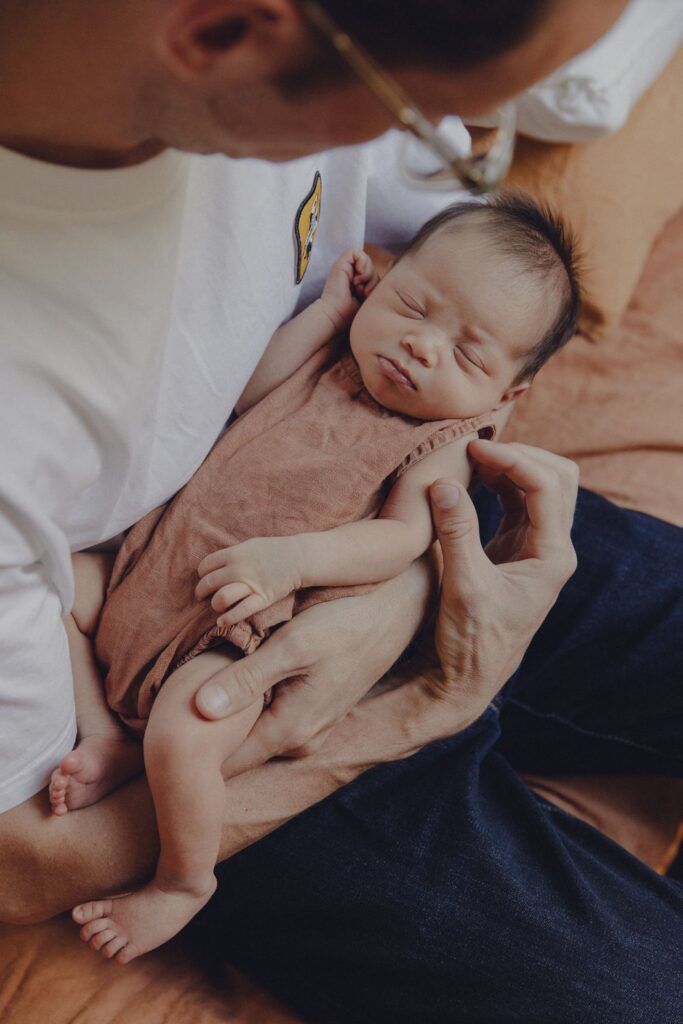
Safe Sleep Essentials: Red Nose Australia’s Loren Shares Expert Guidelines for New Parents
In this episode, we chat with Loren, a registered midwife turned sleep safety educator at Red Nose Australia. Loren shares her comprehensive journey from supporting families through pregnancy and birth to becoming a leading voice in SIDS prevention and safe sleep practices. This conversation is packed with practical, evidence-based guidance that every new parent, midwife, and doula needs to know about creating the safest possible sleep environment for babies.
Loren takes us through Red Nose Australia’s six life-saving recommendations that have reduced SIDS rates by an incredible 80% since the 1990s, explains the science behind safe sleep products, and discusses the exciting new collaboration with Bonds to create Red Nose-endorsed sleepwear. Whether you’re expecting your first baby or supporting families professionally, this episode provides invaluable insights into protecting our most vulnerable little ones.
Loren’s path to becoming a sleep safety expert began in the traditional midwifery space, where she supported families across all areas of maternity care. “I started off as a midwife and I worked in sort of all areas of maternity, so supporting people during their pregnancy and then through the birthing process, and then out on the postnatal wards, and also in the special care nurseries as well,” Loren explains.
Her transition into parenting support came naturally when she had her own children. “When I had my own kids, I transitioned to support from pregnancy right through to the child’s first birthday. And that was sort of more via sort of like a telephone and online support service. And that was a great opportunity for me because I got to sort of expand my knowledge in that, more of that parenting sort of space.”
Working in early parenting centres opened Loren’s eyes to the reality of how families navigate sleep and settling challenges at home. “A lot of people would sort of say to me when I was sort of talking to them about, you know, how is it at home? What’s your daily routine like? And they’re like, oh, it’s terrible, you know, I don’t even want to admit to you what I’m doing. And I said, don’t worry. I’m sure I’ve been there and done that myself as well.”
This honest reflection led to a profound realisation: “I also didn’t sleep my kids the safest that I could have done. And you know, I didn’t realise that at the time. So I had been teaching antenatal classes as a midwife and I’d been sort of teaching safe sleep practices. Didn’t really quite fully understand the full extent of safe sleep.”
The Foundation of Red Nose Australia
Red Nose Australia’s origins stem from tragedy transformed into purpose. The organisation was founded by families who had lost babies to SIDS and “wanted to dive further into the research behind SIDS and SUDI, and discovered that really at the start there was quite a lack in that department.”
The breakthrough came in the 1990s with the development of the “Back is Best” programme. Loren recalls the cultural impact: “I remember being at school wearing that red nose and really sort of helped go further into that research and spreading that message that back is best.”
The organisation’s National Safety Advisory Group, comprising experts in their respective fields, developed six crucial recommendations that have achieved remarkable results. “These six recommendations have helped to reduce the risks of SIDS by 80%,” Loren emphasises. “Since the nineties with the introduction of the back is best program, which is absolutely an incredible reduction.”
The Six Life-Saving Recommendations
- Back is Best
The foundation of safe sleep remains placing babies on their backs on “a firm flat surface, so no inclines are not having any sort of tilt. Nice and flat. That firm mattress is really vital to keeping them safe. So nothing that can sort of mould over that sort of nose and mouth and helps keep their airways nice and open.”
- Room Sharing
Red Nose Australia recommends supervised sleep “for at least the first six months, and that is the same for day and night.” Loren explains the recent update to their guidance: “We used to say that for the first six to 12 months, but we have changed that to at least the first six months. And the reason we’ve made that change is because we found that a lot of parents were keeping their babies in the sort of smaller bassinets for a lot longer than they should have been.”
The key is ensuring babies transition to appropriate sleep spaces as they develop: “It’s really important once a baby is showing signs of rolling that they transition into the bigger cot.”
- Smoke-Free Environment
The research on smoke exposure reveals multiple layers of risk. “Being in a smoke-free environment during pregnancy has helped to also reduce things like premature birth. It helps improve the baby’s birth weight as well. So that then reduces the baby’s risks of SIDS and SUDI from that level as well.”
Post-birth smoke exposure affects babies’ protective reflexes: “Research has shown that that smoke exposure affects their ability to rouse and protect themselves. Should they go into a vulnerable state… that ability to sort of remove themselves, reposition or push up and turn and protect their airways is actually reduced in that sort of smoke environment.”
Loren addresses the often-overlooked issue of third-hand smoke: “Nicotine is quite sticky… when we’ve got people who are smoking, even if it’s outside, they do bring that into baby’s environment where baby plays or sleeps.”
Understanding ‘Breathable’ Products and Temperature Regulation
One of the most important clarifications Loren provides concerns the term ‘breathable’ in baby products. “A lot of people think that the word breathable means if the baby is up against it, that they can breathe through it through the fabric… But that’s actually not the case.”
She explains the correct definition: “The term breathable actually is more about air permeability… What it means is that the baby’s body temperature can be regulated. So the extra body heat can escape through the tiny little holes between the threads of the fabric.”
This distinction is crucial because “around a third of those infants have shown signs of overheating at some stage” in SIDS and SUDI cases.
The Red Nose and Bonds Collaboration
The partnership between Red Nose Australia and Bonds represents a significant step forward in making safe sleep products more accessible to Australian families. “The great thing about working with Bonds is that through our collaboration is that we’ve gone through those six recommendations and our goal with Bonds is to make sure that their products meet those guidelines.”
Key features of the endorsed products include:
Two-way zips: “They’ve got a sort of like that two both way zip, which is so handy for parents in the middle of the night. We just wanna get into the bottom half of the nappy… We don’t wanna have to undress them and get them fully undressed and cold in the middle of the night.”
Natural fibres: “They use really great fabric choices and they have more of that natural sort of fibres that really help babies to regulate their body temperatures.”
Proper fit considerations – The sleeping bags are “quite roomy at the bottom… having that little bit of extra room down the bottom allows them to be able to sort of kick and move their legs around, which is wonderful for development, but it’s also great for the hips.”
Swaddling Safety Guidelines
Loren provides essential guidance on safe swaddling practices: “If you do decide to swaddle, try not to make it too tight. So we want it to be firm, but not tight. We don’t wanna restrict that breathing around that sort of chest area. And we don’t wanna make it so tight and firm around the legs and the hips because research has shown that by doing that we were actually impacting the hip development.”
The transition away from swaddling is crucial: “When infants sort of start turning onto their side and they’re looking like they’re getting their sort of leg over and they’re about to start turning onto their tummy, that’s when I’d start thinking about getting their arms free.”
Practical Temperature Management
Rather than prescribing specific room temperatures, Red Nose Australia takes a practical approach: “We actually don’t have a set temperature when it comes to setting up the room. And that’s because every state in Australia has a very different climate. So we really just sort of say, try and dress baby in something that is appropriate for the room environment.”
The general guideline is “layering it similar to what you are wearing and then just add a light layer on the top.”
For temperature checking, Loren advises: “Always feel baby temperature by just placing a hand either here on their chest. So it’s that core body temperature is what we’re wanting. Or either just behind their neck on their upper back. That’s their real body temperature, so don’t go by the hands and feet.”
Understanding TOG Ratings
Loren demystifies TOG ratings for parents: “That is a thermal regulation rating. It actually is a standard that’s a European standard, so it’s not an Australian standard. So we do need to always be mindful that we are always checking babies.”
The collaboration with Bonds has produced practical tools: “Bonds have created a dressing guide. They worked with RMIT and Red Nose to create that. And it’s sort of a dressing guide that you can use in relation to their sleeping bags.”
New Safety Standards and Future Impact
Looking ahead, Loren is excited about upcoming changes: “The safety standards, the new safety standards that are gonna be enforced from January next year are just gonna be absolutely amazing and it’s gonna help support so many Australian families out there to get it right from the start.”
Key Takeaways for New Parents
This conversation reinforces that safe sleep doesn’t have to be complicated, but it does require informed decision-making. Loren’s journey from midwife to sleep safety expert demonstrates how professional knowledge combined with personal experience creates the most effective support for families.
The 80% reduction in SIDS rates since the 1990s proves that evidence-based guidelines save lives. As Loren concludes: “Working at Red Nose, I’ve delved even further into it… it’s gonna help support so many Australian families out there to get it right from the start.”
For more information about Red Nose Australia’s guidelines and the endorsed Bonds range, visit rednose.org.au and bonds.com.au.
This episode is essential listening for anyone supporting families with newborns. The practical, evidence-based guidance provided by Loren offers peace of mind and potentially life-saving information for creating the safest possible sleep environment for babies.*
Episode Sponsor
Categories
Related Products
-
Birth Orbs: Your Powerful Pain Management Allies
$29.95When you squeeze these spiky beauties during contractions, your brain focuses on the pressure in your hands instead of what’s happening down below.
Join the conversation
Sign up to get the latest updates, freebies, podcast releases straight into your inbox
@AustralianBirthStories
Follow along with us
@AustralianBirthStories
Follow along with us
@AustralianBirthStories
Follow along with us
@AustralianBirthStories
Follow along with us
@AustralianBirthStories
Follow along with us
@AustralianBirthStories
Follow along with us
@AustralianBirthStories
Follow along with us
@AustralianBirthStories
Follow along with us
@AustralianBirthStories
Follow along with us
@AustralianBirthStories
Follow along with us
@AustralianBirthStories
Follow along with us
@AustralianBirthStories
Follow along with us
